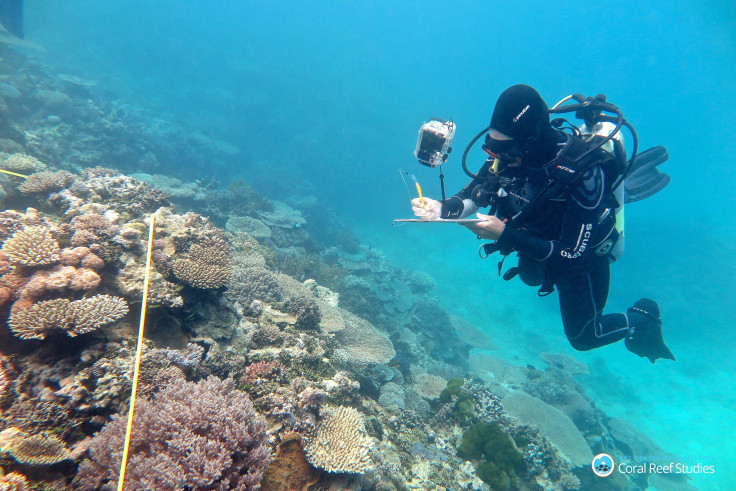Climate Change News: Coral Bleaching Spreading On The Great Barrier Reef

The Great Barrier Reef has been at risk for a year now following a 2016 coral bleaching event, but new findings show that after yet another bleaching event, two thirds of the reef have been severely damaged.
The bleaching, a product of warming waters, causes the healthy corals to lose their algae and turn a ghostly white color. The Great Barrier Reef saw massive bleaching to the northern sector of the reef in 2016, and now it has spread to the central reef as well.
Read: Climate Change News: Coral Bleaching Is A Major Threat
Professor Terry Hughes of James Cook University of Queensland, Australia, is the director of the Arc Center of Excellence for Coral Reef Studies, he’s been studying the bleaching events and released his findings this week.
What Is Coral Bleaching?
When coral is exposed to warmer waters or a changing environment, like increased pollution, it can lose the algae living in its tissues, leaving it with a white “bleached” color. This algae serves as a food source for the coral and also gives it its vivid colors. While coral can survive a bleaching event, such events put coral under a lot of stress and can lead to death if the conditions don’t go back to normal.
There were big bleaching events in 1998, 2002 and 2016 that Hughes and his team studied, but quickly following the 2016 event was one in the early months of this year. The reason this is so concerning to Hughes and other scientists is that it’s happening more frequently, and the reef needs time to recover or else it will die. Coral reefs support ecosystems that use the reef as a habitat and also help protect the shoreline from surging waters.
“That is significant because it postpones any hope of recovery,” Hughes told Yale Environment 360, “The current bleaching occupies a different geographical footprint from last year, which is bad news because it means between last year and this year a much greater extent of the Great Barrier Reef has now been damaged.”
Hughes spent a lot of time flying above the reefs to identify areas where bleaching was occurring and then divers working on the study also went underwater to verify the findings discovered during aerial observation.
From above the bleached corals have a white or yellow look to them.
The warming waters causing the bleaching probably have to do with global warming. Temperatures are rising at an alarming rate and there is more CO2 in the air and water speeding up the warming process as well.
“There is a rapidly closing window where we still have the opportunity to address this issue. Cutting greenhouse gas emissions is the way. We simply cannot afford to continue with business as usual,” Hughes told Yale Environment 360.
© Copyright IBTimes 2024. All rights reserved.





















